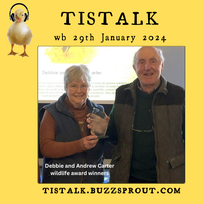 You can listen to the interview Debbie and Andrew Carter gave on TisTalk episode 4 for 2024, about the Lifetime Achievement Award they received from Wiltshire Wildlife Trust in December. Tune in at https://www.buzzsprout.com/1992504/14441760 Photo (c) Wiltshirewildlife.org
We are very proud of our committee member Debbie Carter, who was recently awarded with a Lifetime Achievement Award (jointly with Andrew, her husband) at Wiltshire Wildlife Trust’s volunteer celebration event on the 1st of December 2023. The Committee and Oysters Coppice volunteer group are extremely grateful to Debbie (and Andrew!), for their dedication to nature conservation, protecting our local natural sites and helping others learn about our local wildlife through all these years. You can read more about the awards on Wiltshire's Wildlife Trust website: https://www.wiltshirewildlife.org/news/volunteer-awards-2023. And you can also listen to an interview with Debbie which was broadcasted on BBC Radio Wiltshire's Sue Davis programme. This can be listened as a podcast of the 08 Dec 2023, minute 2:40 (available for 29 days on BBC Sounds): https://www.bbc.co.uk/sounds/play/p0gsw1tf Inés López-Dóriga The Peoples’ Trust for Endangered Species (PTES) collates and analyses any records sent in from many counties and sites which are part of the National Dormouse Monitoring Project (NDMP). The registered sites record any nests found in the boxes and the abundance, sex, weight and breeding condition of any dormice found in them, or the lack of them. The sites in the project are checked by people who hold a licence to do so, mainly volunteers. The licence is a requirement from Natural England, as dormice are classified as ‘Vulnerable’.
I started a dormouse monitoring site about 15 years ago in Oysters Coppice and Gutch Common, with new boxes being added progressively. We check the 173 boxes once a month from April to November and the records are sent to PTES. We had none in Oysters Coppice but a few in Gutch Common wood this year. On 11th November, I attended the 2023 Dormouse conference in Reading. Here are some of the notes I took. Ian White, from PTES, gave an up-to-date report about the state of Britain’s dormice (you can read the full report here). They have declined by 70% in monitoring sites since 2000 and are on the verge of being reclassified as ‘endangered’. However, they are known to live along roads and railways, in dense scrub and in conifer forests, so there may be more than are known. In the last century, there were dormice in all but two counties in England and Wales. In this century, they have become extinct in twenty counties. Some captive bred dormice have been reintroduced successfully in some of these. Reasons for the decline in dormice:
How to survey for dormice? Survey methods frequently used:
What can we do for dormice? Here is a list of some conservation efforts:
Most of these facts come from the Dormouse conference but some opinions are mine (Debbie Carter 2023). Ed.: Our society has two dormouse survey licence holders and are willing to assist any local prospective surveyors in starting out a new surveying or monitoring project. Congratulations to our committee member Debbie Carter, who has been shortlisted as a finalist in the Green category for BBC Radio Wiltshire’s Make a Difference Awards.
As most of our members are aware, Debbie has been a very active and essential committee member for many years, in addition to other nature-related causes in Tisbury and surrounding area she’s dedicated a lot of time, effort and passion. Woodlands Alive organiser, parish council’s tree warden, WWT’s nature reserve warden, water vole surveyor, dormice surveyor… Debbie was conducting a botanical survey near the community field (which she was instrumental in obtaining for the enjoyment of all the residents of Tisbury!) when she received the call from BBC to let her know about her nomination! So we are very pleased to hear Debbie has been shortlisted. They’ve had more than 200 nominations in total across the eight categories, with finalists being shortlisted by a panel of four, based on anonymous nomination letters. There will be an award ceremony on Saturday 23rd September, where they will be announcing the overall winner for each category. In the meantime, you will be able to hear Debbie’s story, as well as that of other finalists, on interviews BBC Radio Wiltshire will be conducting over the summer. We wish Debbie all the best for this award and thank her for all she does for nature and all of us who value nature. by Inés López-Dóriga Readers will have seen regular notices in Focus about workdays at Oysters Coppice. With spring approaching, this small but valuable woodland is ready to come into its own. In February and March, the wild daffodils come into bloom. They look wonderful in early spring sunshine, as drifts of their small, pale yellow trumpets nod in the breeze below the hazel catkins. The wild species is probably the flower about which Wordsworth was writing in his famous poem.
Soon after the daffodils come carpets of bluebells one of the beauties of a British woodland in spring. But the wood is full of other plants and wildlife by virtue of being an ancient woodland. This is the term used to describe an English woodland that is shown to have persisted since 1600 which is when maps became fairly reliable. Ancient woodland is rare, covering only 2.5% of the country. A map from around the turn of the 19/20th Century shows a wood with the current outline, and even depicts a footpath through it running along the same line as today. Having retained woodland cover for so long, ancient woods develop and retain rich communities of plants, animals and fungi not found elsewhere. These are lost when land is cleared for agriculture, and most will not return if a new wood is subsequently replanted on the same site. The wood is on a gentle north facing slope dropping about 45m from top to bottom. The top (southern) end lies on sandstone but most of the wood lies on mudstone and muddy is what the wood gets in winter when the springs and flushes run with water. Where the ground is drier oaks can grow but much of the wood is dominated by hazel, ash, and the damp-loving alder. It is probably the dampness of the ground combined with the north facing slope that saved the wood from clearance for agriculture. Oysters Coppice is just one of several interconnected ancient woodlands in and around Gutch Common, probably all surviving for similar reasons which, combined, provide a significant area of valuable habitat. Coppicing is a woodland management system which crops relatively young growth from regrown stools on a regular rotation, while retaining some longer growing standard trees above. Over centuries this would have provided an annual crop of poles for a variety of uses as well as maintaining woodland cover. This provided a relatively consistent environment within the wood, although the amount of sunlight reaching the woodland floor would vary according to how recent an area of the coppice had been cut. Ash, hazel, and alder respond well to coppicing the latter doing well in the wetter parts of the wood. The coppicing is now undertaken by volunteers to let light in and create the temporary clearings which are so beneficial for wildlife. There is a circular path around the wood which volunteers also maintain. While visitors are welcome at any time, the owners, Wiltshire Wildlife Trust, ask visitors to keep their dogs on leads and not to stray off the path. In so doing they can minimise disturbance to the wildlife communities that have taken centuries to develop. by Andrew Graham The Wiltshire Wildlife Trust succeeded in purchasing the remaining area of Gutch Common Site of Special Scientific Interest (SSSI). This ancient site and its diverse habitat is protected and managed as a public nature reserve, connecting with Oysters Coppice SSSI and Wincombe Lane Woods to create an area of 108.59 acres of protected woodland and wet grassland - see this map. We walked from Semley to Gutch Common - reaching the dizzy height of 241m on the way before slithering down the precipitous hillside, as per the photos below - and Oysters Coppice where we finished with a picnic sheltering from the rain under trees. Along the paths we noticed several bushes with leaves turned into black lace - Alders, with the alder beetle having been at work. It is magnificent woodland - we passed some 'archaeological' remains of a former farmyard, ie rusting farm machinery; some superb trees including some 'fallen giants'; beautiful fungi; and a tiny frog sheltering among the roots of a tree. We were led by Debbie Carter who, as well as being on our committee and the Tisbury Tree Warden, looks after the Coppice day-to-day and also Peter Shallcross and Ines Lopez-Doriga: to all of whom warm thanks for a lovely exploration of this ancient woodland.
To get an idea of what you too might enjoy, take a look at the most interesting blog written by Glen Coy about the visit he made to Oysters Coppice almost exactly a year ago https://www.hiddenwiltshire.com/post/oysters-coppice-gutch-common Another place to read about the route from Semley to Oysters is on the website http://www.discovernadder.org.uk/uploads/images/countryside_activities/Walk9_SemleyAges.pdf which notes local landmarks including the base of a former medieval cross on the outskirts of Semley that has been known as the Plague Stone ever since 1665, when Semley residents left food there for parishioners of Donhead St. Mary during an outbreak of plague - which casts a new light on social distancing and queuing outside the Tisbury Co-op! Glyn Coy's blogpost on his recent visit contains some lovely photos of this secluded little wood - a perfect outing for small children.
Our volunteers had a new experience at our working day on 7th October. They were tasked to do an initial survey of the ‘new’ ancient woods acquired by Wiltshire Wildlife Trust up Semley Hill.
These were bought for the Trust by some very generous people of Semley and stretch for a mile to the North side of the road to Shaftesbury. They were originally given to the Arundell family by Queen Elizabeth I in 1572 and have remained with that family until now. They are on an extremely steep slope so not suitable for farming and have common rights which allow 10 landholders of Semley parish to access them. Originally this would have been for livestock and probably rights to take fallen wood. These common rights still stand so it means the woods will never have permanent fences around them. The Trust is also acquiring two areas of SSSI (site of special scientific interest). One is Gutch Common itself, where there are dormice, and the other is the steep woodland up to Castle Rings, an Iron Age earthwork at the top of the hill which was later occupied by the Romans. In all they will own over 100 acres of woodland including Oysters Coppice. It is fortunate that we now have a large number of enthusiastic and knowledgeable volunteers to help manage these woods for the Trust. On 7th October the group spread out and recorded mammal signs, notable trees, invasive species (none) and fly tipping. On the positive side there was plenty of evidence of badgers and foxes and even evidence of dormice in the hazel copse. There were plenty of veteran and notable trees - mainly oak but also holly, beech and sycamore. There were many signs of old quarries which may have been worked by the Romans as they are below the old Castle Rings fort. It would be interesting to get an archaeology survey done at some later time. The negative side was a large amount of fly-tipping covering the area. This will have to be cleared to try and prevent further fly-tipping. There was also a sizeable ‘bivvy’ that had obviously been occupied during the summer and signs of mountain biking. The Trust has also benefited from a generous grant from The Banister Charity towards the purchase of the two SSSI’s. However they still have to raise £20,000 to cover legal and administrative costs so if anyone should feel passionate about protecting our special ancient woodlands look at the following link: https://www.wiltshirewildlife.org/Appeal/gutchcommon This is a video kindly made by Ed Bersey a Trust member, to appeal for donations. For further information on volunteering or about the new woods please use our contact form. |
Photo: Avocets (Izzy Fry)
The headers display photos taken by our members. Do get in touch via the Contact Form if you'd like to submit a photo for selection.
Archives
May 2024
Categories
All
|


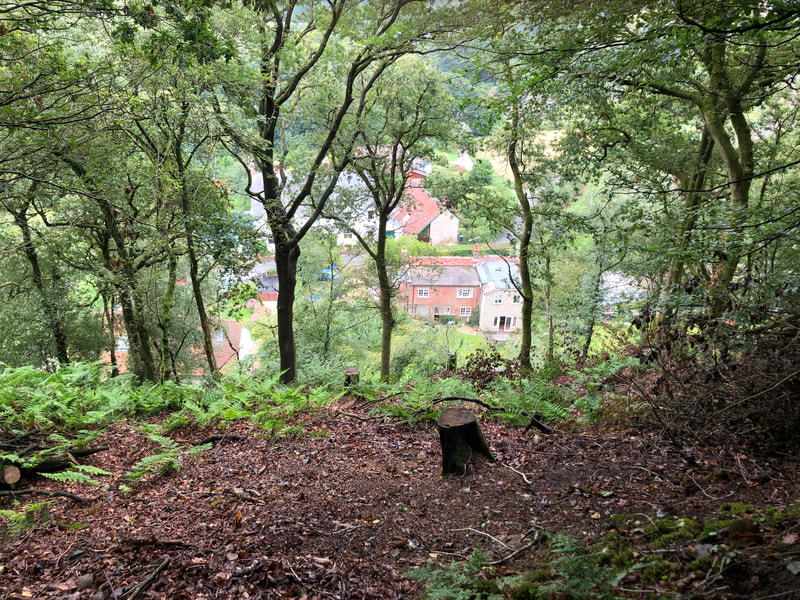


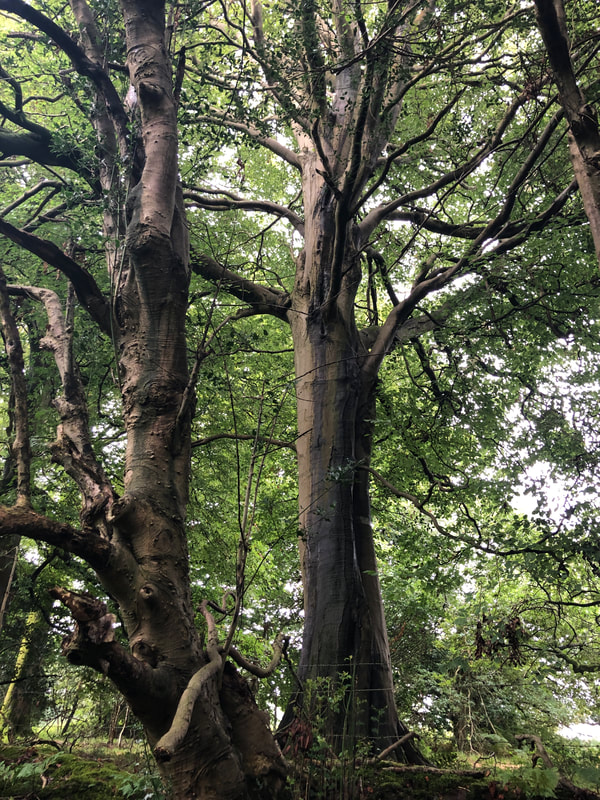
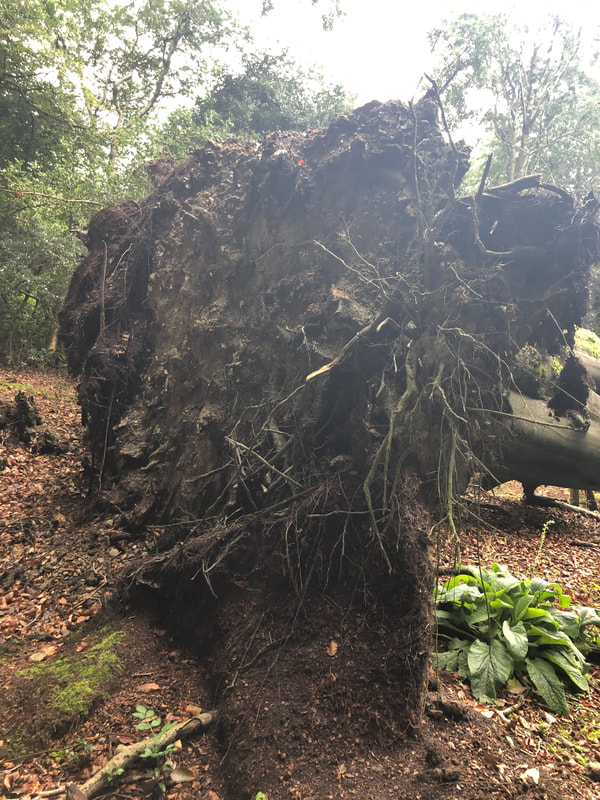
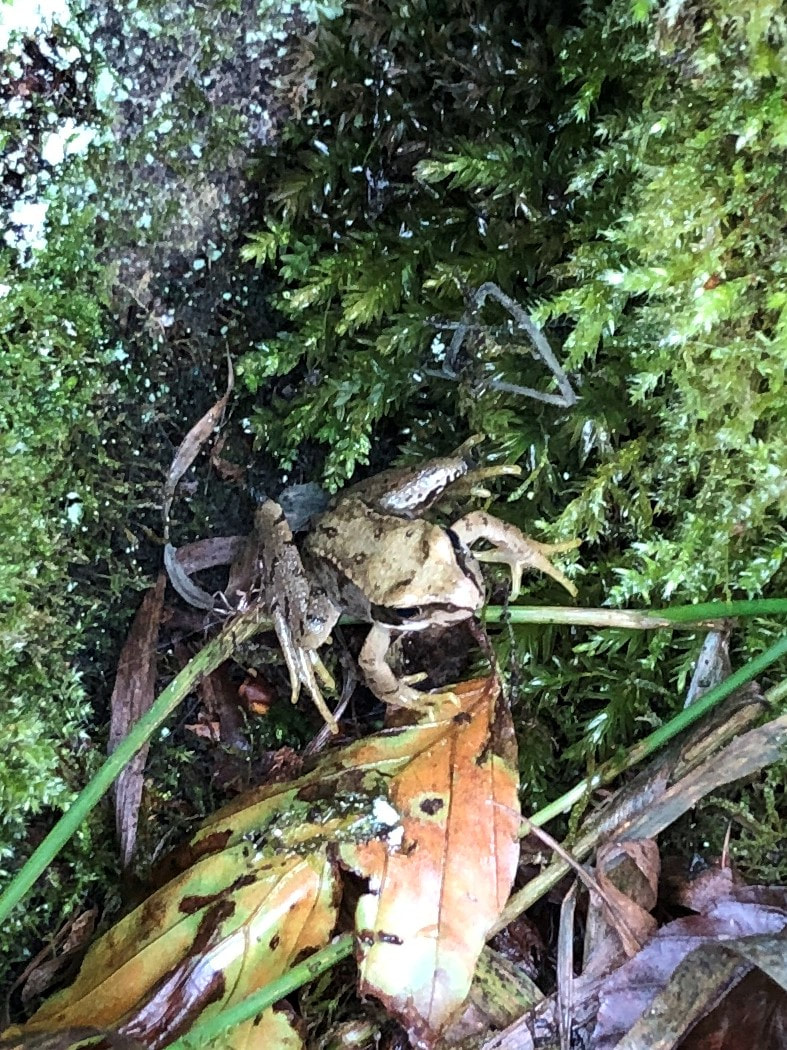
 RSS Feed
RSS Feed